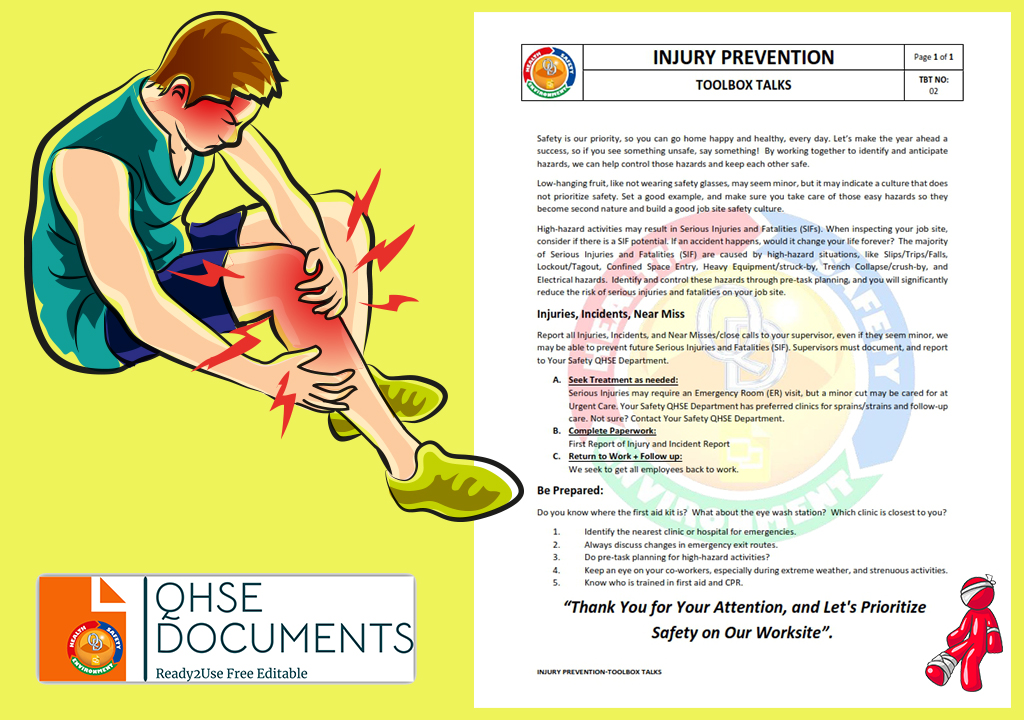 |
| QHSE DOCUMENTS-INJURY PREVENTION TOOLBOX TALKS |
Safety is our priority, so you can go home happy and healthy, every day. Let’s make the year ahead a success, so if you see something unsafe, say something! By working together to identify and anticipate hazards, we can help control those hazards and keep each other safe.
Low-hanging fruit, like not wearing safety glasses, may seem minor, but it may indicate a culture that does not prioritize safety. Set a good example, and make sure you take care of those easy hazards so they become second nature and build a good job site safety culture.
High-hazard activities may result in Serious Injuries and Fatalities (SIFs). When inspecting your job site, consider if there is a SIF potential. If an accident happens, would it change your life forever? The majority of Serious Injuries and Fatalities (SIF) are caused by high-hazard situations, like Slips/Trips/Falls, Lockout/Tagout, Confined Space Entry, Heavy Equipment/struck-by, Trench Collapse/crush-by, and Electrical hazards. Identify and control these hazards through pre-task planning, and you will significantly reduce the risk of serious injuries and fatalities on your job site.
Injuries, Incidents, Near Miss
Report all Injuries, Incidents, and Near Misses/close calls to your supervisor, even if it seem minor, we may be able to prevent future Serious Injuries and Fatalities (SIF). Supervisors must document, and report to Your Safety QHSE Department.
A. Seek Treatment as needed:
Serious Injuries may require an Emergency Room (ER) visit, but a minor cut may be cared for at Urgent Care. Your Safety QHSE Department has preferred clinics for sprains/strains and follow-up care. Not sure? Contact Your Safety QHSE Department.
B. Complete Paperwork:
First Report of Injury and Incident Report
C. Return to Work + Follow up:
We seek to get all employees back to work.
Be Prepared:
Do you know where the first aid kit is? What about the eye wash station? Which clinic is closest to you?
1. Identify the nearest clinic or hospital for emergencies.
2. Always discuss changes in emergency exit routes.
3. Do pre-task planning for high-hazard activities.
4. Keep an eye on your co-workers, especially during extreme weather, and strenuous activities.
5. Know who is trained in first aid and CPR.
“Thank You for Your Attention, and Let’s Prioritize Safety on Our Worksite”.